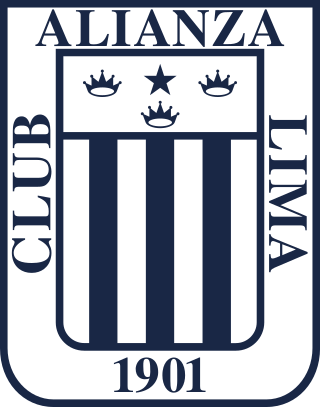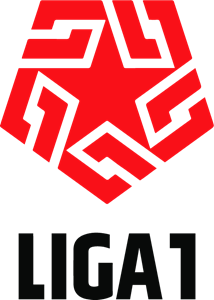
The Peruvian Football Federation is the body that governs Association football in Peru. It was founded on August 23, 1922, and affiliated with FIFA in 1924. It is a member of CONMEBOL since 1925, and directly oversees the Peru national football team, futsal team youth teams, the Copa Federación, and the amateur leagues. The Peruvian National football team has won two Copa América's, six Bolivarian Games titles and qualified for the FIFA World Cup five times.

The Peru national football team represents Peru in men's international football. The national team has been organised, since 1927, by the Peruvian Football Federation (FPF). The FPF constitutes one of the ten members of FIFA's South American Football Confederation (CONMEBOL). Peru has won the Copa América twice, and has qualified for the FIFA World Cup five times ; the team also participated in the 1936 Olympic football competition and has reached the semi-finals of the CONCACAF Gold Cup. The team plays most of its home matches at the Estadio Nacional in Lima, the country's capital.

Club Alianza Lima, is a Peruvian professional sports club based in La Victoria District of Lima, Peru. The club was founded under the name of Sport Alianza on 15 February 1901 by working-class youth in the Chacaritas neighborhood of Lima. It is widely known for having one of the most historical and successful football teams in Peru; they have won a total of 21 official league titles of the Peruvian Primera División and are currently the oldest team playing in that competition, since the club was founded in 1901. According to CONMEBOL, it is considered the most popular club in Peru with more than 12 million fans as of April 2016.

Club Universitario de Deportes, popularly known as Universitario or simply as La "U", is a Peruvian football club based in Lima. The club was founded in 1924 under the name Federación Universitaria by students of the National University of San Marcos but was forced to rename in 1931. Since 1928, the club competes in the top tier of Peruvian football, the Torneo Descentralizado. In 2000, they opened the 80,000-capacity stadium Estadio Monumental, currently the largest stadium in Peru and second-largest in South America, retiring their smaller Estadio Teodoro Lolo Fernández. Universitario and Alianza Lima participate in the Peruvian Clásico, which has its roots in the club's first participation in the Primera División in 1928. It also has rivalries with Sporting Cristal, Deportivo Municipal, and Sport Boys.

The National Stadium of Peru is a multi-purpose stadium located in Lima, Peru. Its current capacity is 50,086 seats as stated by the Peruvian Football Federation without the lodges for some thousands more. The stadium was first inaugurated on 27 October 1952 for the 1953 South American Championship—replacing the Stadium Nacional—and is Peru's principal and national stadium. It has hosted three of the six South American Championship/Copa América football competitions held in Peru. It is referred to as the Coloso de José Díaz because of its proximity to a street of the same name. It is the home ground of the Peru national football team. The IPD —a branch of the Ministry of Education—is the stadium's administrating entity. The stadium has undergone several renovations for tournaments such as the 2004 Copa América. The artificial turf was installed for the 2005 FIFA U-17 World Championship. The most recent renovation started in 2010 and concluded in 2011. The re-inauguration ceremony of the renovated stadium was held on 24 July 2011 with a match between the Peru national under-20 football team and the Spain national under-20 football team.

The club is the first soccer representative of the first port of Peru, Callao, which laid the foundations for future Chalacos clubs, going from being a school club to being a professional club, gaining recognition, prestige and trust among fans of the Callao, from Lima and Peru, since today there are many clubs with the name of Atlético Chalaco, but only one is the original and traditional. [At present, Atlético Chalaco is called the "Historical Soccer Heritage of the Constitutional Province of Callao ".

The Peru First Division, officially known as Liga 1, is the top flight of association football in Peru. It has been referred to as Torneo Descentralizado since 1966, when the first teams residing outside the Lima and Callao provinces were invited to compete in the inaugural league national competition.

Club Centro Deportivo Municipal, commonly known as Deportivo Municipal, is a Peruvian football club based in Lima, Peru. They are among Peru's most recognizable clubs and enjoy considerable popularity. The bulk of their success was won a few years after the club was founded in 1935. The club was a top-flight contender during this period and won four Primera División titles. The club suffered relegation three times in their history: 1967, 2000, and 2007. They have also been champions of the Segunda División on three occasions: 1968, 2006, and 2014, granting them promotion to the first division. In 2014, they won the Segunda División and they currently compete in the Primera División Peruana.
Marathon Sports is a Ecuadorian sports equipment manufacturing company founded by Rodrigo Ribadeneira in May 1981, when the brand opened its first store. The company, headquartered in Quito, manufactures and distributes athletic sportswear to sports teams and athletes, mainly association football uniforms.

The Peru women's national football team represents Peru in international women's football and is controlled by the Peruvian Football Federation (FPF) has a part of the CONMEBOL confederation since its formation in 1996.
Football is the most popular sport in Peru. Football/soccer in Peru was introduced by British immigrants, Peruvians returning from Great Britain, and by English sailors in the later half of the 19th century during their frequent stops at the port of Callao, which at that point was considered one of the most important ports of the Pacific Ocean. According to the work entitled La Difusión del Fútbol en Lima, during the last decade of the 19th century, records show that sailors were known to practice sports such as football/soccer and played against teams made up of Englishmen, Peruvians, or a mix between Englishmen and Peruvians.
Peru participated in the World Cup during the first World Cup in 1930 and has participated in qualifiers since 1958.
The history of the Peru national football team dates back to the late 19th century, when English sailors and Peruvian travelers returning from England introduced the sport into Peru. It would take the early 20th century, in the year 1927, for Peru to finally create their first official national football team. Till the date, Peru has participated in five editions of the FIFA World Cup, its best results being the quarterfinals reached in 1970 and 1978, while in South America, it has been champion of the Copa América in 1939 and 1975.
The Liga de Ascenso Femenina is currently the second level league competition for women's football in Peru that officially started in 2009. Until 2019 it was the top tournament of Peruvian Primera División Femenina whose winner qualified for the Copa Libertadores de Fútbol Femenino, the South American Champions League. The competition is organised by the Peruvian Football Federation.
The 2018 Torneo Descentralizado de Fútbol Profesional was the 102nd edition of the top flight of Association football governed by the Federación Peruana de Futbol (FPF). There were 16 teams in play; Alianza Lima were the defending champions. Sporting Cristal won their nineteenth domestic championship on 16 December after beating Alianza Lima in both legs of the finals.

Merged content from Peruvian Primera División Femenina to here
The 2022 Supercopa Peruana was a planned football super cup contested by the winners of the previous season's Liga 1 and Copa Bicentenario competitions.

The Peru women's national under-20 football team represents Peru in international women's football age of U-20 and is controlled by the Peruvian Football Federation (FPF) as a part of the CONMEBOL federation. The team plays South American Under-20 Women's Football Championship and FIFA U-20 Women's World Cup.
The División Intermedia, the second division of Peruvian football (soccer) in 1926 until 1934, and the third division of Peruvian football (soccer) in 1935 until 1940. The tournament was played on a home-and-away round-robin basis.














